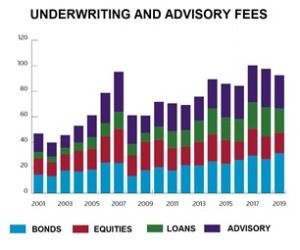![]()
![]()
To see the digital version of this report, please click here
To purchase printed copies or a PDF of this report, please email gloria.balbastro@refinitiv.com
There are new features available.
View now.
Search
There are new features available.
View now.
Search
![]()
![]()
To see the digital version of this report, please click here
To purchase printed copies or a PDF of this report, please email gloria.balbastro@refinitiv.com
When it comes to China, Donald Trump is not shy about taking credit. The US president’s self-proclaimed list of achievements even includes convincing Chinese President Xi Jinping not to send troops into Hong Kong to deal with months of anti-government protests, according to a rambling interview he gave to Fox News in November. As far-fetched as that may be, Hong Kong’s capital markets probably owe him some gratitude. The Stock Exchange of Hong Kong leapfrogged the New York Stock Exchange and Nasdaq to become the largest venue for new listings...
There is a term in Japanese business circles for a market that has developed without the influence of external forces. Garapagosu-ka, which translates to Galapagosisation, takes its inspiration from the quirks of nature found only in the remote Galapagos islands, 1,000km off the coast of Ecuador. It is a fitting description for the yen bond market, which has retained its own unique characteristics even as the global markets have evolved to become faster and more efficient. This fondness for isolation, however, is slowly fading. After six...
When regulators decided that it was no longer tenable to have deals worth trillions of US dollars linked to Libor it was for good reason. There are, after all, virtually no underlying transactions in actual Libor. But in their rush to chart life after Libor regulators overlooked something vital: the new money market, risk-free benchmarks they are pushing do not possess some of the key characteristics of Libor that market practitioners have come to rely on. And if large, sophisticated issuers are selling bonds linked to new risk-free rates (RFRs...
How best to organise and develop an institutional fixed-income market to finance real environmental change has become a vital and urgent topic for the finance industry. A key question is whether green bonds – where proceeds are ring-fenced with a defined use, and that comply with defined standards such as ICMA’s Green Bond Principles or the Climate Bonds Standard – are fit for purpose as an effective driver of substantive climate-change mitigation. Why? Because of the almost complete absence of environmental polluters in the green bond market ...
As another painful year for Europe’s banks draws to a close, the need for big bank consolidation has never been greater. For years, calls for consolidation as the answer to the woes of Europe’s hobbled banking sector have fallen on deaf ears. But in 2019 a broader consensus began to emerge that there is a pressing need for intra-bank mergers & acquisitions. Europe’s fragmented banking sector has been under pressure for almost a decade, and that ramped up a notch over summer when the European Central Bank cut rates, increasing the stress on...
All websites use cookies to improve your online experience. They were placed on your computer when you launched this website. You can change your cookie settings through your browser.

